Kewei Shen
Improving Grammatical Error Correction via Pre-Training a Copy-Augmented Architecture with Unlabeled Data
Mar 01, 2019
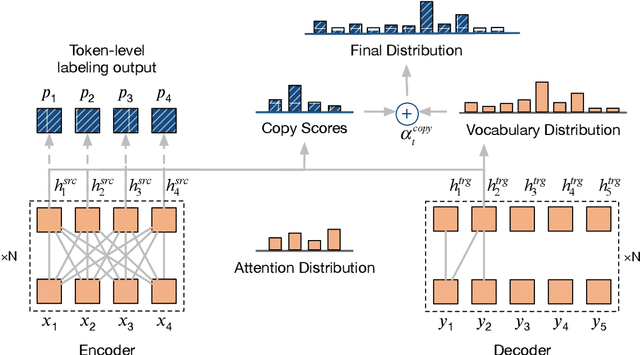

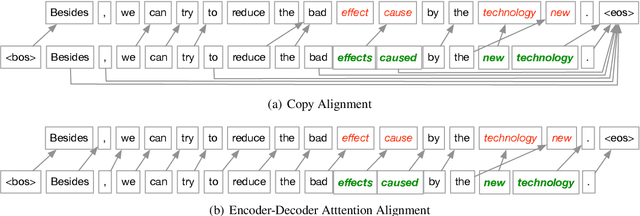
Abstract:Neural machine translation systems have become state-of-the-art approaches for Grammatical Error Correction (GEC) task. In this paper, we propose a copy-augmented architecture for the GEC task by copying the unchanged words from the source sentence to the target sentence. Since the GEC suffers from not having enough labeled training data to achieve high accuracy. We pre-train the copy-augmented architecture with a denoising auto-encoder using the unlabeled One Billion Benchmark and make comparisons between the fully pre-trained model and a partially pre-trained model. It is the first time copying words from the source context and fully pre-training a sequence to sequence model are experimented on the GEC task. Moreover, We add token-level and sentence-level multi-task learning for the GEC task. The evaluation results on the CoNLL-2014 test set show that our approach outperforms all recently published state-of-the-art results by a large margin.
Multi-Perspective Context Aggregation for Semi-supervised Cloze-style Reading Comprehension
Aug 20, 2018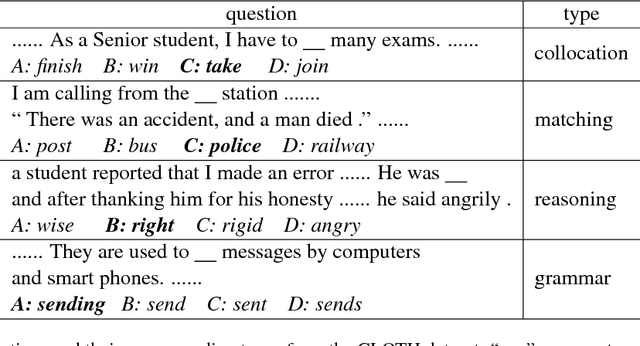
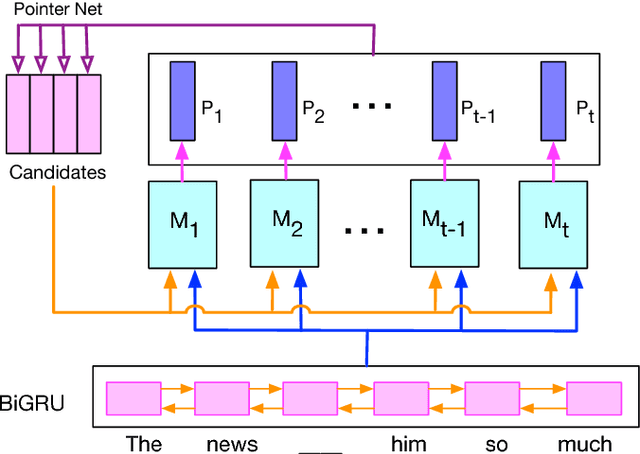
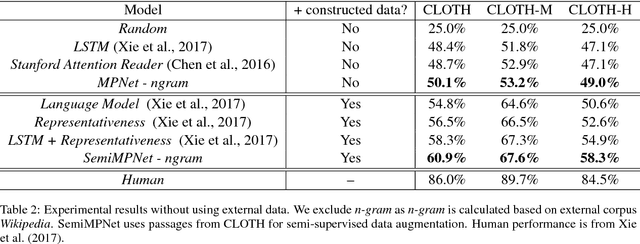
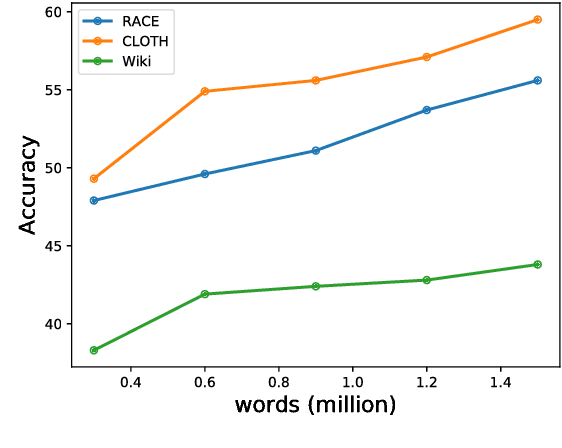
Abstract:Cloze-style reading comprehension has been a popular task for measuring the progress of natural language understanding in recent years. In this paper, we design a novel multi-perspective framework, which can be seen as the joint training of heterogeneous experts and aggregate context information from different perspectives. Each perspective is modeled by a simple aggregation module. The outputs of multiple aggregation modules are fed into a one-timestep pointer network to get the final answer. At the same time, to tackle the problem of insufficient labeled data, we propose an efficient sampling mechanism to automatically generate more training examples by matching the distribution of candidates between labeled and unlabeled data. We conduct our experiments on a recently released cloze-test dataset CLOTH (Xie et al., 2017), which consists of nearly 100k questions designed by professional teachers. Results show that our method achieves new state-of-the-art performance over previous strong baselines.
Yuanfudao at SemEval-2018 Task 11: Three-way Attention and Relational Knowledge for Commonsense Machine Comprehension
May 15, 2018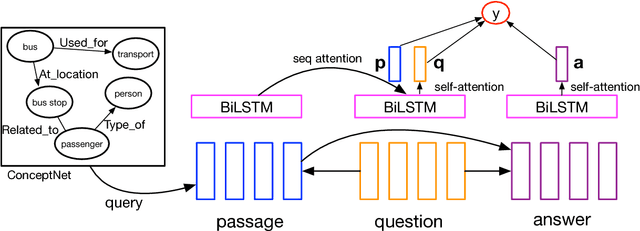

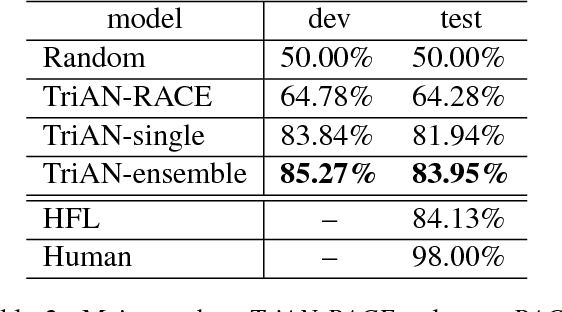

Abstract:This paper describes our system for SemEval-2018 Task 11: Machine Comprehension using Commonsense Knowledge. We use Three-way Attentive Networks (TriAN) to model interactions between the passage, question and answers. To incorporate commonsense knowledge, we augment the input with relation embedding from the graph of general knowledge ConceptNet (Speer et al., 2017). As a result, our system achieves state-of-the-art performance with 83.95% accuracy on the official test data. Code is publicly available at https://github.com/intfloat/commonsense-rc
 Add to Chrome
Add to Chrome Add to Firefox
Add to Firefox Add to Edge
Add to Edge